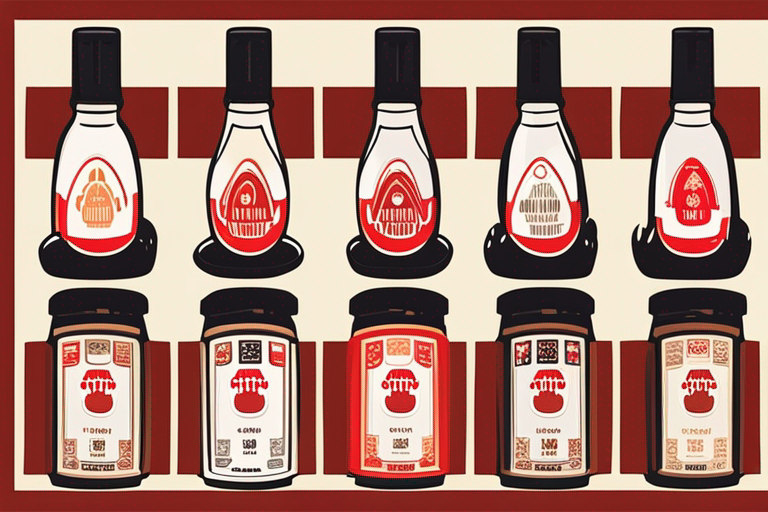
Understanding Oyster Sauce Expiration Date: What You Need to Know
Get Your Free Food Safety Cheat Sheet
30 most common foods with instant answers. Print it and stick it on your fridge—completely free!
Understanding Oyster Sauce Expiration Date: What You Need to Know
Oyster sauce is a popular condiment in Asian cuisine, known for its rich umami flavor and versatility in various dishes. Like any food product, oyster sauce has a shelf life and an expiration date that consumers should be aware of to ensure food safety and quality. In this blog post, we will delve into the details of oyster sauce expiration dates, how to store it properly, and tips on using it safely in your cooking.
What is Oyster Sauce?
Oyster sauce is a thick, dark brown sauce made from oyster extracts, soy sauce, sugar, and other seasonings. It adds depth and savory flavor to stir-fries, marinades, and dipping sauces. Oyster sauce is a staple ingredient in Chinese, Thai, and Vietnamese cuisines, prized for its unique taste profile.
How to Identify Expiration Date on Oyster Sauce Bottles
When purchasing oyster sauce, it is essential to check the expiration date on the bottle or packaging. Here are some tips on how to identify the expiration date:
- Look for a "Best By" or "Use By" date printed on the label.
- The expiration date is typically expressed as a month and year (e.g., "Best By: 03/2023").
- Check for any signs of spoilage, such as discoloration, off-smell, or unusual texture.
Does Oyster Sauce Expire?
Yes, oyster sauce does expire. While oyster sauce is a condiment with a relatively long shelf life, it is crucial to pay attention to the expiration date to ensure its quality and safety for consumption. Over time, the flavor and quality of oyster sauce may deteriorate, affecting the taste of your dishes.
Factors Influencing Oyster Sauce Shelf Life
Several factors can influence the shelf life of oyster sauce:
-
Storage Conditions: Proper storage is key to maintaining the quality of oyster sauce. Store it in a cool, dark place away from direct sunlight and heat sources.
-
Contamination: Avoid cross-contamination by using clean utensils and sealing the bottle tightly after each use.
-
Quality of Ingredients: High-quality oyster sauce made from fresh ingredients may have a longer shelf life compared to lower-quality varieties.
Safe Storage and Handling of Oyster Sauce
To prolong the shelf life of oyster sauce and ensure food safety, follow these storage and handling tips:
- Store oyster sauce in a cool, dry place, away from heat and sunlight.
- Keep the bottle tightly sealed when not in use to prevent air exposure.
- Avoid contaminating the sauce by using clean utensils and not double-dipping.
- Check for signs of spoilage before using oyster sauce in your dishes.
Tips for Using Oyster Sauce Safely
While oyster sauce can enhance the flavor of your dishes, it is essential to use it safely to prevent foodborne illnesses. Here are some tips for using oyster sauce safely:
-
Cook Thoroughly: When using oyster sauce in cooked dishes, ensure that the sauce is heated to the appropriate temperature to kill any harmful bacteria.
-
Check for Freshness: Before adding oyster sauce to your dish, smell it to ensure it has a fresh, savory aroma.
-
Avoid Raw Consumption: Oyster sauce is typically used in cooked dishes and should not be consumed raw to reduce the risk of foodborne illnesses.
Conclusion
In conclusion, understanding the expiration date and proper storage of oyster sauce is crucial for maintaining its quality and safety. By following the guidelines outlined in this blog post, you can enjoy the rich flavor of oyster sauce in your favorite dishes while ensuring food safety. Remember to check the expiration date, store oyster sauce correctly, and use it safely in your cooking practices. By doing so, you can savor the delicious taste of oyster sauce without compromising on food safety.

Authoritative Food Safety References
These agencies and university labs inform every tip and health precaution we publish.
USDA FoodKeeper – Cold Storage Guidelines
Official refrigerator, freezer, and pantry timelines maintained by the U.S. Department of Agriculture.
Visit USDA FoodKeeperFDA Produce Safety Rule & Grower Guidance
Field-to-fridge handling practices that prevent contamination of fruits, vegetables, and leafy greens.
Visit FDA Produce SafetyCDC Foodborne Illness Prevention Hub
Surveillance-backed guidance on pathogens, symptoms, and steps to reduce foodborne illness risk.
Visit CDC Food SafetyUC Davis Postharvest Technology Center
University research detailing optimal storage atmospheres for produce after harvest.
Visit UC Davis PostharvestPenn State Extension – Home Food Preservation & Safety
Peer-reviewed extension bulletins on safe canning, chilling, and reheating practices.
Visit Penn State ExtensionCan you use oyster sauce past its expiration date?
How can you tell if oyster sauce has gone bad?
Can you freeze oyster sauce to extend its shelf life?
Is it safe to consume oyster sauce if it has been stored in the refrigerator for a long time?
Get Your Free Food Safety Cheat Sheet
30 most common foods with instant answers. Print it and stick it on your fridge—completely free! Want more? Upgrade to the complete guide with 70+ foods.
Scan your food directly and get instant safety info using our AI-powered camera feature.